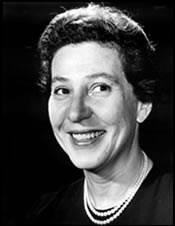
|
Compositions *** |
Solo for Oboe
year
1929
duration
4 ¾ minutes
première
April 21, 1930, Carnegie Chamber Hall, New York City, D. Desarno, oboe
program notes
Experimentation is apparent in Solo for Oboe. At the time Fine did not know an oboist, but liked the sound and decided to write for it. The piece is in three movements: Allegretto (quarter-note = 176), Lento (quarter-note =72), and Con spirito (quarter-note = 176). Although it is not inscribed on this piece (she would do this later), the young composer was careful that an accidental affect only the note it precedes, and she added courtesy naturals to make her intentions clear. The Solo for Oboe is a study in energy as created by line and duration. For example, the line of movement one is a mixture of consonant and dissonant intervals marked by large leaps of a major seventh or minor ninth, which create energy that is released through a change in direction and narrower movement.
Although it would seem that Fine was using motivic patterning or intervalic control…these are not significant, and…Fine stated: “I would not have been conscious of cells or motifs at that time, I just wrote intuitively.”…Fine recalled that she was not interested in creating a compositional system or procedure. Instead, these were the kinds of sounds and durations that she was hearing in the modernistic works she admired, and it was material that appealed to her.
Fine composed Solo for Oboe when she was sixteen years old, and what is amazing are the varying phrase lengths, articulations, durational variety, and sense of recapitulation. Imre Weisshaus…thought so highly of the piece that he arranged for it to be premiéred at a Pan-American Association of Composers’ concert at the Chamber Hall of Carnegie Hall in New York City.–Heidi Von Gunden, The Music of Vivian Fine, Scarecrow Press, 1999